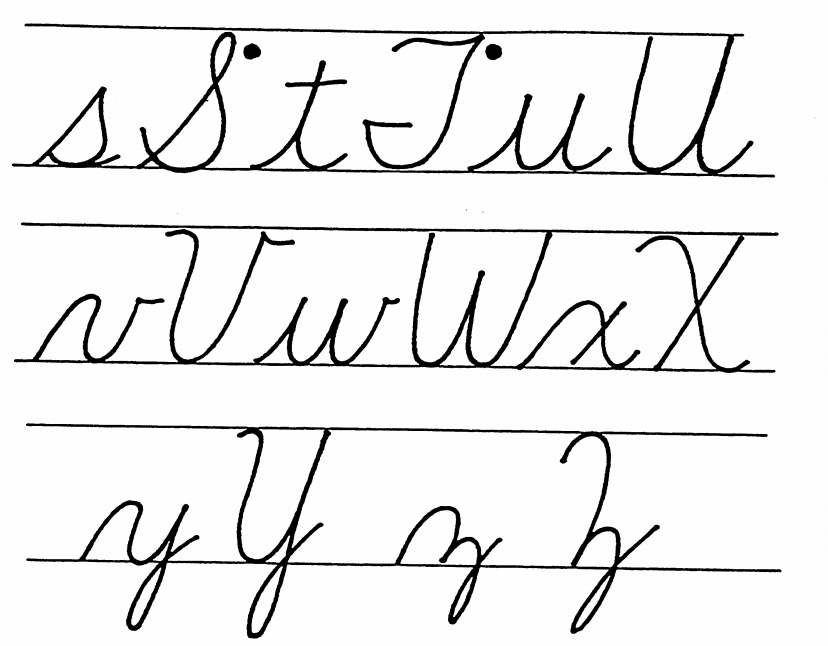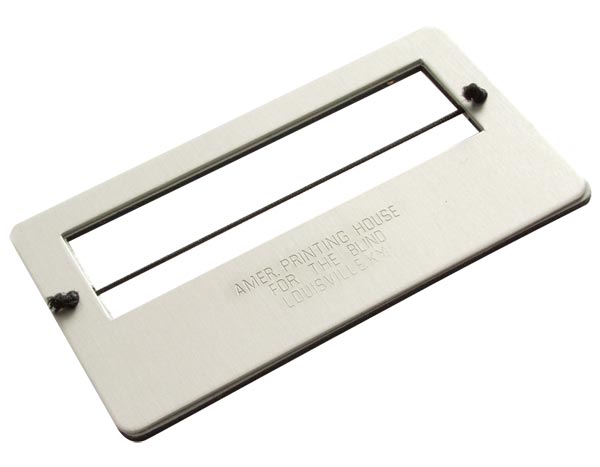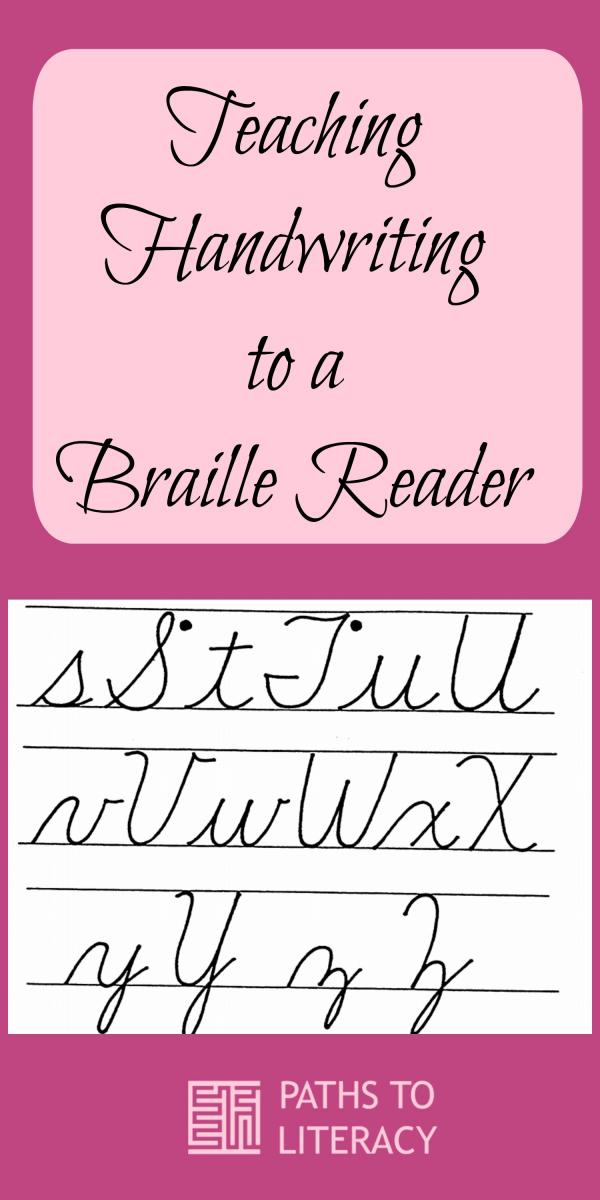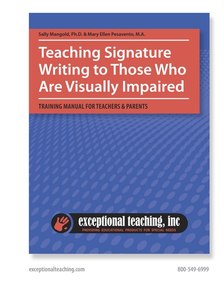Teaching Handwriting to a Braille Reader

For children who read braille, one handwriting skill that needs to be taught is the child’s signature. This skill is usually started in second or third grade when the other children begin to learn cursive writing. A braille reader’s signature is always written in cursive because there is no starting and stopping. It’s continuous and they don’t have to pick up the pen or pencil to find the top!!! Also it’s the way we as adults are asked to sign important documents.
The time to teach a specific letter is when those letters are used in conversation to reference ideas or concepts such “U” shaped curve, “S” shaped curve, “t” intersection, “Y” intersection, or “L” shaped route. These letters don’t need to be taught specifically but more like it’s introduced so that the child understands what you’re talking about.
-
 Signature guide
Signature guide - Letter writing guide
- Raised line drawing kit available from Maxi-Aids
There are many ways to teach a student’s signature. Here is an example of one way:
- Decide what the child is going to write as their signature. This is a discussion to have with the child’s parents. Remember not everyone writes every single letter of their names when they sign their signature. Some people only write their first initial and last name. Others write their first and last name with their middle initial. Still others write their signature with a letter followed by a line. Their signature doesn’t need to be perfect, but it needs to be consistent.
- At first, practice writing the student’s signature without using a signature guide. The space within a signature guide is very limited and many children need to make exaggerated movements to understand the concept of “short line to the right”.
- Have the students do square or rounded letters. For example the letter “J” might be line down, and to the left or short line to the left then a line going straight up.
- Begin by having the student trace his or her name from start to finish. Say the letters and the directions for writing each letter as you write the letter. To teach you can go hand under hand or square the letters such as go up, then right then down.
- Talk about connecters so that the child does not put their letters on top of one another.
- Have the student practice using the Raised Line Drawing Kit as lines that are drawn become raised and easily traced. The child’s signature becomes easily followed by touch.
- Once the child understands the directions for writing his or her signature, use a letter writing guide over the raided line drawing kit. This will begin to confine the student’s signature from top to bottom but still give the student room to spread out to the right or left. This will also provide the student with a firm beginning and ending point as they begin to refine their signature. The letter writing guide also allows them to use the entire page to practice their signature without moving the signature guide to a new location.
- Once you feel that the student is ready, move them to a signature guide.
- In order to develop consistence, you should provide practice so have the student use the signature guide on a daily basis. Have the student carry a signature guide so that they can sign their name anytime they need to.
Commercially Available Products for Teaching Handwriting
Dr. Sally Mangold demonstrates a creative teaching method that helps young students as well as adults make a legal signature. Practical teaching tips are interspersed throughout this 35-minute DVD. The book includes exercises, a sample lesson plan and sample signatures.
Freund Longhand Writing Kit available from American Printing House for the Blind
This kit helps students learn cursive writing. It includes an embossed workbook, a Tactile Marking Mat (also available separately), a pad of 100 sheets of embossed-line paper for use with the Marking Mat, and a manual in both regular print and braille. This document is also available as a free download from APH, although the pdf may not be accessible.

This article was originally posted on the BrailleSC website, which was funded by a grant from the US Department of Education with support from the University of South Carolina Upstate and The Maryland Institute for Technology in the Humanities.

 Teaching Signature Writing to Those who are Visually Impaired available from Exceptional Teaching Aids
Teaching Signature Writing to Those who are Visually Impaired available from Exceptional Teaching Aids